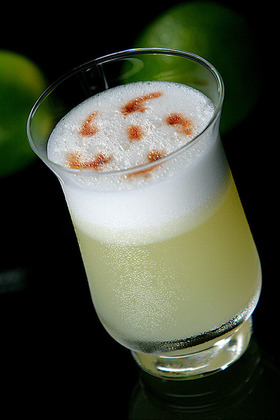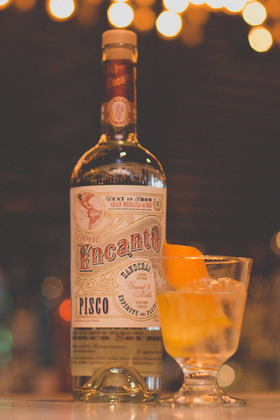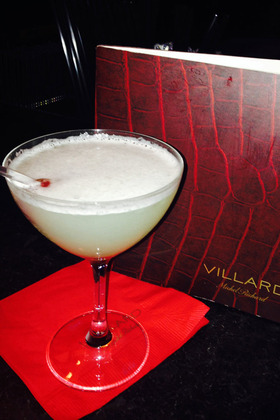The Pisco Sour and Beyond
Three cocktails placing Peru’s most cherished spirit at the forefront


The historic grape-based white spirit, Pisco, is the basis for the national drink of both Peru and Chile. With production commencing at the turn of the 17th century, the tipple is as historic as it is representative of the cocktail cultures within its origin nations. Pisco is a descendant of Spanish-Arabic distillation, almost mirroring how Brandy de Jerez tasted before South America was a glint in the ambitious eye of the Western World. According to Encanto Pisco, today, “It is the living legacy of the world’s first potable spirit; a burnt wine, an un-aged single-distilled grape eau-de-vie.” It reached the US in the mid 1830s, and since has wavered between obscurity and ravenous attention. From the traditional and the experimental, we tried a few different Piscos and selected three of our favorites for cocktails that truly demonstrate the drink’s dynamic nature.

The Pisco Sour is the most commonly made cocktail calling upon the spirit’s powers. It’s also the easiest entry point into the world of Pisco (though some—Mark Twain included—would say Pisco Punch is easier). That said, the drink is refreshing and smooth, but highly textured and ever-unfolding. We tried one made with the super premium Macchu Pisco and found it to be a delightful change from our usual concoctions, perfect for summer but with enough weight to carry it through the year. Bonus: it’s also just as easy to make as it is to drink.
Pisco Sour
60 ml Macchu Pisco
30 ml simple syrup
30 ml fresh lime juice
30 ml egg white
Thoroughly shake up all the ingredients with plenty of cubed ice, strain into a sour glass and garnish with several drops of bitters. As with all cocktails, the fresher the lime juice and eggs—the better the end result. Altogether, this cocktail is well-rounded, refreshing and relevant—even though it dates back to 1872.

With Encanto Pisco, created in an “Acholado” style, we delved further into Pisco’s depths. Encanto has been a bartender favorite since its inaugural year and blends with the best of white spirits. This particular artisanal grape brandy is produced in the Ica Valley of Perú, and is a cuvee of many different small batches, across vintages, and four different varietals: Quebranta (74%), Torontel (6%), Moscatel (4%) and Italia (16%). As for the cocktail, an original creation of Duggan McDonnell, Campo de Encanto’s distiller, the Vice & Virtue is bold and bright—and adds scotch to the mix. It’s potent, powerful and a truly unique treat for the tongue.
Vice & Virtue
2 oz Encanto
.5 oz. Islay Scotch
.25 oz. yellow chartreuse
.25 oz. agave nectar
2 dashes orange bitters
Once again, the recipe calls for makers to simply stir all the ingredients together, straining the concoction into a small rocks glass and then garnishing with a lemon peel. This cocktail carries a bit of a bite, but is so well-balanced that every note shines through.

For a refined, adventurous exploration within the spirit, we enjoyed the wondrous Pisco 100. This premium blended iteration requires an average of eight kilos (18 pounds) of grapes to produce just one liter. And that quality is noticeable—whether your sipping it neat or within L’Esprit de Raison, a cocktail made by Michel Richard for Villard at NYC’s The Palace Hotel.
L’Esprit de Raison
2 oz Pisco100 d’Esperance
.5 oz Armagnac Blanche
two red grapes
egg white
fresh lime juice
simple syrup
Yet again, this recipe is as easy as blending together all the ingredients, making sure the egg white froths up nicely. While red grapes are placed within the cocktail, a champagne grape garnish also adds a nice touch. And though the formula is extremely quick and simple, this result is a delicate, thoughtful drink that takes Pisco into an elegant world of complexity and class.
Images courtesy of respective brands












